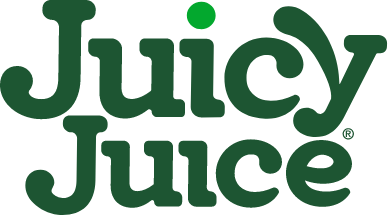Fun Spoken


Eighteen-month-old Kacey is never at a loss for words.
Her mother, Frances Hong of Englewood Cliffs, N.J., cannot even guess how many words are in her daughter’s vocabulary.
“She’s learned so many recently, I’ve lost track,” Hong admits. “Most 18-month-olds have been using words for a few months,” says Kenn Apel, co-author of Beyond Baby Talk: From Sounds to Sentences, A Parent’s Complete Guide to Language Development. “But something new happens around a year and a half. Children go through a vocabulary burst. It’s as though the world pops open for them.”
What to Expect
At this age, toddlers typically use between 25 and 50 words, according to Apel, who chairs the department of communicative disorders and sciences at Wichita State University in Kansas. They’re also beginning to form two-word phrases. You’ll hear them utter “hi” and “bye,” as well as “more” and the ever popular “no”–expressions that help them get what they want.
“An 18-month-old child should also be able to follow simple directions, like ‘Give the baby a kiss,'” adds Dr. Julie Lumeng, a clinical instructor of pediatrics at the University of Michigan in Ann Arbor.
Helping Kids Learn
Parents who are eager to encourage talking should understand that they are following, not leading, their child’s natural tendencies, says Apel. “We don’t teach language, we facilitate it,” he explains. “Kids talk about what fascinates them, so it’s important that your child be in an engaging environment.” Colorful toys and games, outdoor walks and visits to friends will give you plenty of chances to point out people and objects that will inspire your child.
Be on the lookout for other interests your child might have that you can use to spark speech. Some toddlers enjoy certain sounds, and you may hear them saying words that feature them: kitty, cookie, car and the like. “Or your child may like naming games. Increase vocabulary by asking, ‘Where’s your nose? Where’s your mouth?’ and waiting for your child to respond,” says Apel.
Michelle Asch of Rye, N.Y. uses a technique that child-development experts say does wonders to encourage talking: She repeats what her 19-month-old son Owen says, correcting any mistakes-but never in an obvious manner. “If he mispronounces something–saying la-lay for light, for example–I don’t tell him he was wrong. I just say the word accurately,” she recounts.
And of course, children’s books are very helpful, since they’re not just packed with words but are also enjoyable for both parent and child to page through.
The Bilingual Home
If you’re raising a child in a bilingual home, which is increasingly common nowadays, you may wonder if there are additional techniques you should use to make the language-learning process as smooth as possible.
“It’s easiest for children to learn two languages simultaneously if there’s a clear demarcation. Mom speaks Spanish, and Dad speaks English, let’s say. Or perhaps the family speaks Spanish at home and English elsewhere,” says Apel. “By the time kids are five, they typically have both languages down.”
In the Asch household, Owen learns Spanish from his caregiver and his grandparents, while his parents speak English to him. Like many bilingual youngsters, he likes to switch languages. “He’ll say leche, then milk, or vamos, then let’s go, so we know that he understands they mean the same thing,” says his mother.
Farah Bahrampour’s mother, Robin, an American lawyer living in London, was amused to discover that her daughter had figured out how to use her two languages to her advantage. Farah uses cookie when asking her mother to give her one but bisquit, the Farsi word, when she’s speaking to her Iranian father or his parents. The Bahrampours have produced their clever little linguist by divvying up their languages, as the experts suggest. Robin speaks English to Farah, while the rest of the family uses Farsi.
Dual-language learning usually proceeds easily. However, if your 18-month-old is growing up in a bilingual environment and isn’t talking or is very slow to learn new words, mention this to her pediatrician. Perhaps your family is inadvertently handling the multi-language situation in a confusing manner; or there might be an issue, such as a hearing problem, that should be addressed with testing.
Two Steps Forward…
Whether or not your child is bilingual, you might notice a short period at around the year-and-a-half mark when she appears to slow down in her acquisition of new words. You probably don’t need to be concerned, say the experts. “Sometimes kids look as though they’re regressing, but they’re not,” explains Apel. “They may have been able to say something like ‘Daddy go work.’ Then they switch to ‘Daddy going.’ The new sentence is shorter, but adding the ing is conceptually more complicated, so they have, in fact, taken a step forward.”
Language learning is an adventure you and your child are embarking on together. In the course of any day, you’re likely already doing many of the best things to encourage it. Talk, sing and read with your 18-month-old and sit back and enjoy his natural desire to communicate.


